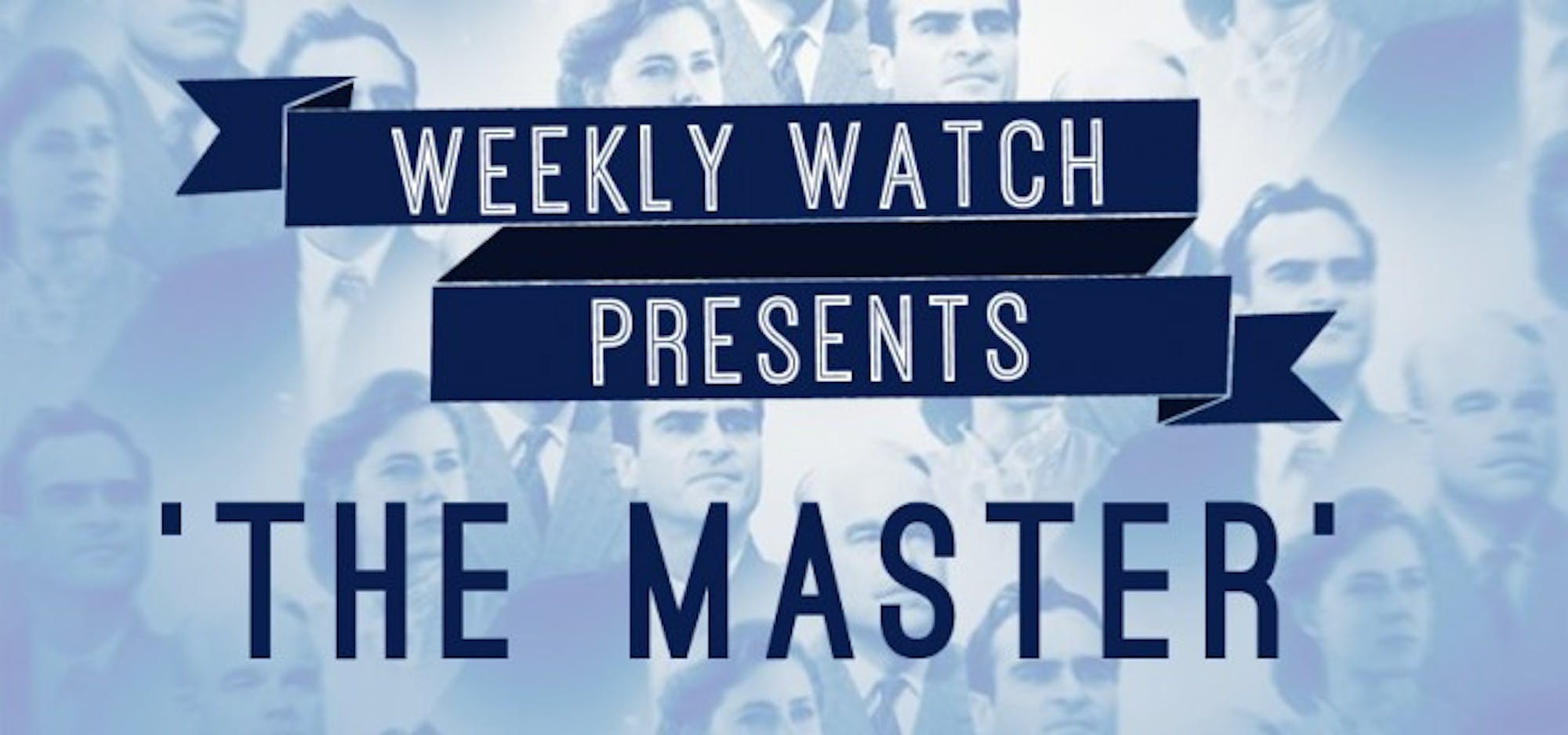
Even after the film’s premiere at the Venice Film Festival, these questions dominated press coverage, with articles dedicated to Anderson’s statements as he confirmed Scientology was indeed a source of inspiration for the film. What often wasn’t discussed amidst the speculation about Scientology’s presence in the film was its actual role in “The Master.” From the beginning of production, many assumed the film was a thinly-veiled history of a religion or a condemnation of its practices.
But while “The Master” centers on a vulnerable World War II veteran (Joaquin Phoenix) who meets Dodd, the leader of a nascent religious movement called The Cause, the Hubbard-inspired Cause is only one small part of a larger story about depression and isolation in postwar America. “The Master” opens with a portrait of troubled protagonist Freddie Quell, played by the incredibly talented Joaquin Phoenix, at the end of World War II. Quell, a crude, violent man, is difficult to like, even as he tries and fails to assimilate to postwar life. Long, painfully-awkward shots of Quell’s confrontations with nearly everyone he meets show the extent of his dysfunction. With little dialogue in the first half hour of the film, we see Quell, an alcoholic likely suffering from PTSD, entirely alone in the world.
The world around Quell in the film’s introduction, however, is breathtaking. With cinematographer Mihai Malaimare Jr., Anderson shot “The Master” entirely in 65-millimeter film, and the result is a super-saturated look emulating the VistaVision films of the 1950s. The long, wide shots are stunning and distinctly Anderson, but the choice of VistaVision film is just one way the director nods to the culture of the 1950s. In fact, Anderson cites the entertainment of the 1950s as central to the film. With its Technicolor visuals and peppering of songs from the 50s, the film is undeniably attempting to capture the feeling of that particular time. In an interview for the Washington Post, Anderson describes the music of the postwar era: “[E]verything was about ‘seeing you again’ or ‘I’ll find you someday,’ . . . You’re talking about finding ways to go back in time and to pick up some lost piece.”
Just as the songs of the 1950s were soaked in nostalgia and sentimentality, so are the characters in “The Master.” At the very start of the film, as Quell is being discharged from the Navy, he is asked during a psychiatric evaluation about a crying spell he had while serving. Quell responds that he was not crying, but rather suffering from nostalgia.
Quell’s psychiatric evaluation hints at the theme of nostalgia in “The Master” and also gives insight into how Dodd’s The Cause fits later in the film and how something like The Cause came to be in the postwar era. Quell’s psychiatric evaluation is filled with pseudoscience and trendy psychology: He gets a Rorschach test and dream analysis from the United States military.
Given this context, the science-fiction-like Cause and Quell’s involvement with the religious group seems considerably less outlandish. Rather than criticize or even attempt to completely understand the inner workings of Scientology, the inspiration for The Cause, Anderson uses the religious movement as a symptom of its time. The Cause, like postwar America, is characterized by desire for the past. Dodd hypnotizes followers to summon memories from their infancy, hints at previous lives and talks of time travel. While the rest of America is romantic in their nostalgia, Dodd crystallizes the desire for the past with rigid rules, tenets and scientific claims. The Cause combats postwar depression with the promise of a new life, as the new life the American military promised veterans like Quell failed to come to fruition.
Though the film centers on themes of nostalgia and rebirth and uses the songs and even film style of the time, "The Master" is, most importantly, not nostalgic itself. The camera’s unwavering gaze at Quell's and Dodd’s lowest and most uncomfortable moments creates a sense of realism that exists outside the film’s nostalgic themes. Instead, “The Master” ultimately is about Quell and Dodd in the midst of this puzzling and largely unstable postwar era. They are two men trying to find meaning and belonging with each other, with Dodd creating order and collecting followers, including Quell, his lost and needy subject. Ultimately, the two fail each other: Dodd’s need for control and Quell’s unbridled violence create discord impossible to overcome, and the men end up despondent and alone.
Interestingly, the 1950s is looked back upon fondly in modern America, labeled an era of booming opportunity and purity. As I watched the film, a friend remarked that the 50s-esque cinematography looked “like a filter,” one of the options we choose from on the Instagram app. Our obsession with the nostalgic look suggests a belief in a simpler and happier time decades ago, but Anderson shows that though the 1950s may look idyllic through VistaVision glasses, something much more complex occurred. This, of course, parallels the themes of the film itself: Just as we share the delusion of a perfect 1950s America, Quell and the rest of the nation desperately cling to the past as they seek comfort in a postwar world, and “The Master” reminds us that what we hold on to may be only something we create.
Weekly Watch: 'The Master'
Sara Shoemake
Sara Shoemake









